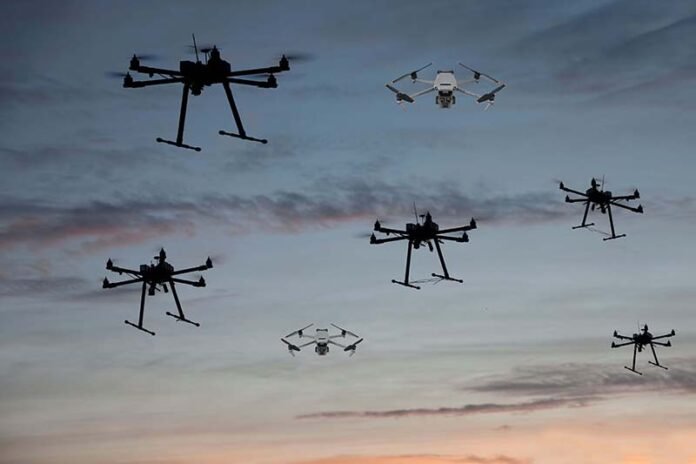Washington: The Pentagon has chosen seven companies to build software to connect the swarms of small, low-cost drones it’s buying through the Replicator program.
The Defence Innovation Unit announced awards for two key Replicator software efforts: Opportunistic, Resilient and Innovative Expeditionary Network Topology, or ORIENT, and Autonomous Collaborative Teaming, known as ACT. DIU issued solicitations in July and received proposals from 251 companies.
The organisation is partnered with US Indo-Pacific Command, the military services and the Pentagon’s Chief Digital and AI Officer on both projects.
“DIU is working actively with partners across the Department to bring the very best capabilities from the US tech sector to bear in support of our most critical warfighter needs,” the organisation’s director Doug Beck said in a statement. “This latest step in the Replicator initiative is a critical example of that teamwork in action.”
ACT software will help coordinate the thousands of uncrewed systems the Defence Department is buying through Replicator, which will include aircraft, boats and ground vehicles. Anduril Industries, Swarm Aero and L3Harris received prototype contracts.
ORIENT is focused on building a more robust command-and-control backbone for Replicator systems. DIU chose Aalyria, Viasat, Higher Ground and IOT/AI to develop prototypes for the effort.
The announcement comes a week after the Pentagon revealed several Replicator equipment awards, including one-way attack drones and systems it will purchase through the Army’s company-level uncrewed aerial system program and the Air Force’s Enterprise Test Vehicle effort.
Deputy Defence Secretary Kathleen Hicks unveiled Replicator more than a year ago as a means to create a process for quickly fielding and scaling in-demand technology throughout the department. Led by DIU, the first phase of the program promises to field thousands of low-cost, expendable drones by August 2025 in a push to deter China. Before last week, DOD had confirmed just one system’s inclusion in the program —AeroVironment’s Switchblade 600.
While some Replicator systems may operate individually or within swarms of similar systems, the Pentagon wants them to be able to connect and collaborate across domains. According to DIU, the software it’s buying through ORIENT and ACT is what will enable that level of teaming.
“Together, these critical software enablers will enable so-called ‘heterogeneous collaboration’ between different Replicator systems fielded in the next year and lay the foundation for the Department’s broader push towards collaborative autonomy,” DIU said.
Replicator 2, the program’s second phase, is focused on technology to counter the types of drones the Pentagon is buying through Replicator’s first increment. Once again, the department aims to field “meaningfully improved” counter-UAS capabilities within two years of receiving funding from Congress.
Lawmakers have approved $500 million for the first round of Replicator systems in fiscal 2024 and DOD requested another $500 million in its FY25 budget. The department plans to include a funding proposal for Replicator 2 in its FY26 budget proposal.
Raksha Anirveda's editorial desk team brings in the collective experience of creative professionals - a fine mix of senior copy editors, writers, proofreaders and designers. Working as a team, they continuously create, manage, and curate content to sustain the magazine's profile and reputation in line with market trends and achieve magazine's goal.





